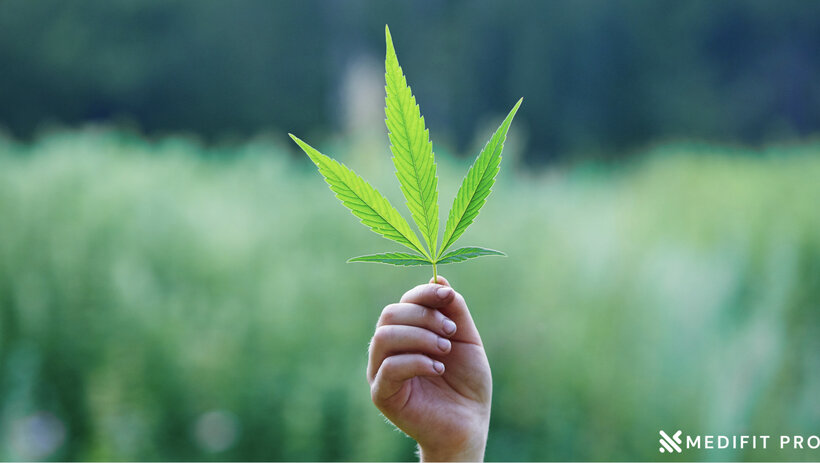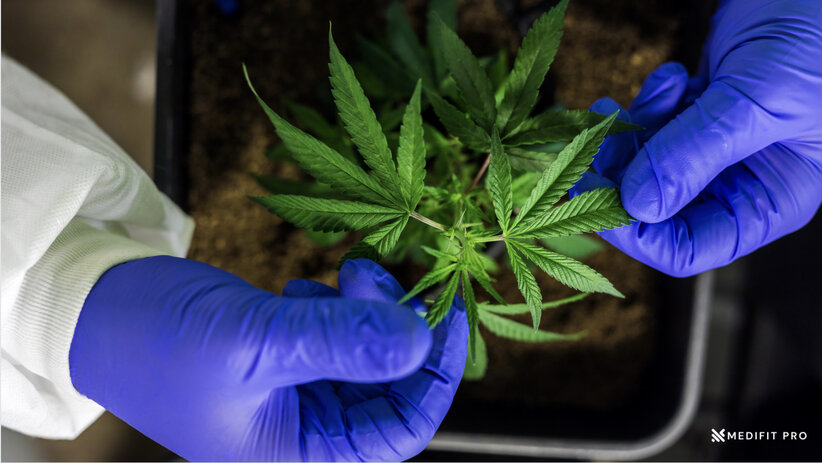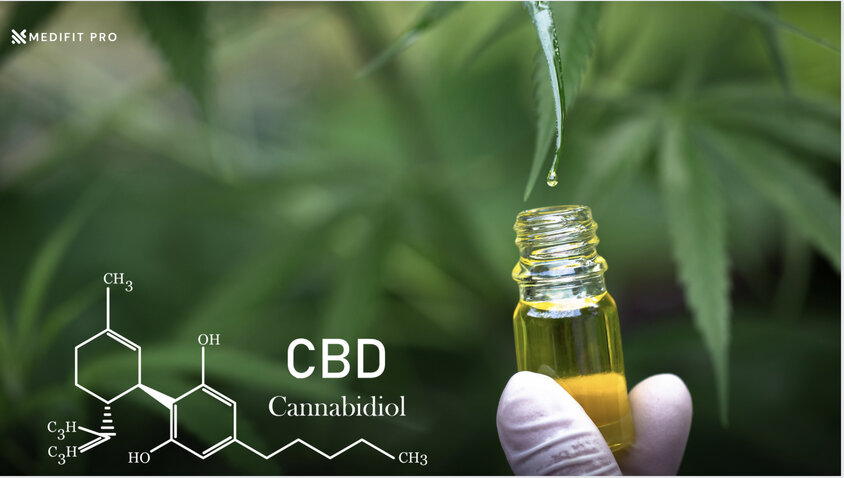Menopause is a natural biological process that marks the end of a woman’s reproductive years. It typically occurs in women between the ages of 45 and 55 and is characterized by the cessation of menstruation. However, menopause is not just about the end of periods. It is a complex physiological process that can lead to a variety of symptoms, including hot flashes, mood swings, sleep disturbances, and vaginal dryness, among others.
Cannabis has been used for centuries to treat a variety of ailments, including pain, nausea, and anxiety. In recent years, there has been growing interest in the use of cannabis for menopause symptom relief. In this article, we will explore the potential benefits and risks of using cannabis for menopause symptom relief.
Menopause is a natural process that occurs when a woman’s ovaries stop producing eggs, and her hormone levels begin to decline. It is a gradual process that usually lasts several years, and it can have a significant impact on a woman’s physical and emotional well-being.
Common Symptoms of Menopause
The symptoms of menopause can vary widely from woman to woman, and they can be mild or severe. Some of the most common symptoms include:
• Hot flashes
• Night sweats
• Mood swings
• Sleep disturbances
• Vaginal dryness
• Decreased libido
• Fatigue
• Joint pain
• Memory problems
Brief Overview of Cannabis Use for Menopause Symptom Relief
Cannabis contains compounds called cannabinoids, which interact with the body’s endocannabinoid system to produce a variety of effects. Some cannabinoids, such as THC (tetrahydrocannabinol), have psychoactive effects and can produce a “high.” Other cannabinoids, such as CBD (cannabidiol), do not have psychoactive effects but may have therapeutic properties.
There is limited research on the use of cannabis for menopause symptom relief, but some women have reported benefits. For example, cannabis may help alleviate hot flashes, insomnia, and mood swings. However, there are also risks associated with cannabis use, such as impaired cognitive function and addiction. It is important to discuss the use of cannabis with a healthcare provider to weigh the potential benefits and risks.
In the following sections, we will explore the potential benefits and risks of using cannabis for menopause symptom relief in more detail. We will also discuss the different forms of cannabis available and provide some tips for safe and effective use.
II. The Endocannabinoid System and Menopause
A. Explanation of the Endocannabinoid System
The endocannabinoid system (ECS) is a complex system of receptors, enzymes, and endocannabinoids that play a vital role in regulating various physiological functions, including appetite, pain, mood, and immune function. The ECS is present in all vertebrates, including humans, and helps maintain homeostasis, or balance, in the body.
B. Changes to the Endocannabinoid System during Menopause
During menopause, there is a significant decline in estrogen levels, which can lead to changes in the ECS. For example, estrogen has been shown to increase the expression of cannabinoid receptors in the brain, which may help explain why women are more sensitive to the effects of cannabis during certain stages of their menstrual cycle.
Studies have also found that the levels of endocannabinoids, such as anandamide, decrease in women during menopause. Anandamide is a cannabinoid that is known to play a role in regulating mood, pain, and appetite. A decrease in anandamide levels may contribute to the development of some menopause symptoms, such as mood swings and joint pain.
C. The Potential Benefits of Cannabis Use for Menopause Symptoms
Cannabis has been shown to have a variety of potential benefits for menopause symptom relief. Here are some of the most promising:
1. Alleviating Hot Flashes and Night Sweats: THC has been shown to have a direct effect on the hypothalamus, which is the part of the brain that regulates body temperature. By activating cannabinoid receptors in the hypothalamus, THC may help reduce the frequency and intensity of hot flashes and night sweats.
2. Improving Sleep Quality: Cannabis has been shown to have sedative effects, which may help women who are experiencing sleep disturbances during menopause. THC has been found to decrease the amount of time it takes to fall asleep and increase the amount of time spent in deep sleep.
3. Reducing Mood Swings and Anxiety: CBD has been shown to have anxiolytic (anti-anxiety) effects, which may help women who are experiencing mood swings and anxiety during menopause. CBD has also been found to have antidepressant effects in some studies.
4. Relieving Joint Pain: Cannabis has been shown to have analgesic (pain-relieving) effects, which may help women who are experiencing joint pain during menopause. THC and CBD both have been found to have anti-inflammatory properties, which may also help with joint pain.
While there are many potential benefits of using cannabis for menopause symptom relief, it is important to note that there are also risks associated with cannabis use, such as impaired cognitive function and addiction. It is important to discuss the use of cannabis with a healthcare provider to weigh the potential benefits and risks. Additionally, it is important to choose safe and effective forms of cannabis and to follow safe dosing guidelines.
III. Research on Cannabis Use for Menopause Symptoms
A. Overview of Existing Research
While there is limited research on cannabis use specifically for menopause symptom relief, there are some studies that have investigated the potential benefits of cannabis for various menopause symptoms. These studies have primarily focused on the use of cannabis products containing THC and/or CBD.
B. Effectiveness of Cannabis for Common Menopause Symptoms
1. Hot Flashes and Night Sweats: One study found that THC was effective in reducing the frequency and severity of hot flashes in menopausal women. Another study found that a combination of THC and estradiol (a form of estrogen) was more effective than either treatment alone in reducing hot flashes.
2. Insomnia: Cannabis has been shown to have sedative effects, which may help improve sleep quality in menopausal women. One study found that a low dose of THC improved sleep quality in postmenopausal women.
3. Mood Changes: CBD has been found to have anxiolytic effects, which may help alleviate mood changes such as anxiety and depression. One study found that CBD was effective in reducing anxiety in people with social anxiety disorder.
4. Vaginal Dryness: There is limited research on the use of cannabis for vaginal dryness, but some studies have suggested that THC may help increase vaginal lubrication.
C. Side Effects and Risks of Cannabis Use for Menopause Symptoms
While cannabis may offer some relief for menopause symptoms, it is important to be aware of the potential side effects and risks associated with its use. Some of the most common side effects of cannabis use include dry mouth, dizziness, and impaired cognitive function. Additionally, cannabis use can lead to addiction and dependence, especially with frequent or high-dose use.
It is also important to note that cannabis use can interact with other medications and may not be safe for women with certain medical conditions, such as heart disease or a history of substance abuse. Pregnant and breastfeeding women should avoid cannabis use altogether, as it may harm the developing fetus or infant.
Overall, more research is needed to fully understand the potential benefits and risks of cannabis use for menopause symptom relief. Women considering the use of cannabis should talk to their healthcare provider to weigh the potential benefits and risks and determine if cannabis is a safe and effective treatment option for their individual needs.
IV. Methods of Cannabis Consumption
Cannabis can be consumed in various forms, and the method of consumption can affect how quickly and how long the effects of cannabis last. Here are the three most common methods of cannabis consumption:
A. Inhalation
Inhalation is one of the most common methods of cannabis consumption. This involves smoking or vaporizing cannabis flowers or concentrates. When cannabis is inhaled, it enters the lungs and is absorbed into the bloodstream quickly, which can result in fast-acting effects. However, the effects of inhalation typically don’t last as long as other methods of consumption, usually lasting between 1-3 hours.
B. Edibles
Edibles are food products that are infused with cannabis, such as brownies, gummies, or chocolates. When consumed, the THC and/or CBD in the edible is metabolized in the liver and absorbed into the bloodstream. Edibles can take longer to take effect than inhalation, usually taking between 30 minutes to 2 hours to feel the full effects. However, the effects of edibles typically last longer than inhalation, often lasting for several hours.
C. Topicals
Topicals are cannabis-infused creams, lotions, balms, or oils that are applied directly to the skin. When topicals are applied, the THC and/or CBD is absorbed into the skin and muscle tissue, but does not enter the bloodstream. This means that topicals typically do not produce psychoactive effects, but can offer localized relief for conditions such as pain, inflammation, or skin irritation.
It is important to note that the method of consumption can also affect the dosage and potency of cannabis. For example, edibles can be more difficult to dose accurately, and the effects can be more intense and long-lasting than inhalation. Additionally, smoking cannabis can have negative effects on lung health, so it may be recommended to consider alternative methods of consumption, such as vaporization or topicals.
V. Legal Considerations
As cannabis is still illegal at the federal level in the United States, there are several legal considerations to keep in mind when using cannabis for menopause symptom relief.
A. Federal and State Laws on Cannabis Use
Under federal law, cannabis is classified as a Schedule I drug, meaning it is considered to have no medical value and a high potential for abuse. However, many states have passed laws allowing for the use of medical cannabis, and some have even legalized the use of recreational cannabis. The legal status of cannabis varies by state, and it is important to research the laws in your state before using cannabis.
B. Potential Legal Risks and Consequences of Cannabis Use
While cannabis may be legal in some states, there are still legal risks associated with its use. For example, even if you live in a state where cannabis is legal, it is still illegal under federal law, and you could potentially face legal consequences if you are caught using or possessing cannabis. Additionally, some employers may have policies that prohibit the use of cannabis, even if it is legal in your state.
It is also important to be aware of the potential consequences of driving under the influence of cannabis. While cannabis use can impair driving ability, there is no reliable test to determine how impaired someone is from cannabis use. As a result, it is recommended to avoid driving or operating heavy machinery while under the influence of cannabis.
VI. Conclusion
As menopause symptoms can significantly impact a person’s quality of life, many individuals are seeking alternative treatments, including cannabis. While research on cannabis use for menopause symptoms is limited, existing studies suggest that cannabis may be effective in providing relief for common symptoms such as hot flashes, insomnia, mood changes, and vaginal dryness.
However, it is important to consider the potential risks and side effects of cannabis use, including legal considerations and the potential for negative health effects. Additionally, cannabis may not be suitable for everyone and may interact with other medications or health conditions.
Further research is needed to fully understand the potential benefits and risks of cannabis use for menopause symptom relief. This includes large-scale clinical trials that examine the efficacy and safety of different cannabis strains, dosages, and methods of consumption.
In conclusion, while cannabis may hold promise as a treatment for menopause symptoms, it is important to approach its use with caution and under the guidance of a healthcare professional. As with any alternative treatment, it is important to weigh the potential benefits and risks before incorporating cannabis into your symptom relief regimen.
Also read Synchronising Your Menstrual Cycle
Reference



























Recent Comments